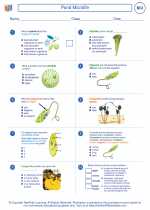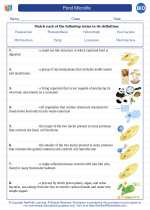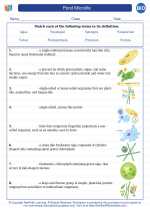Pond Microlife
Pond microlife refers to the diverse assortment of microscopic organisms that inhabit freshwater ponds. These organisms play a crucial role in the pond ecosystem, contributing to nutrient cycling, decomposition, and serving as a food source for larger organisms.
Types of Pond Microlife
1. Algae: Algae are photosynthetic microorganisms that can be found floating in the water or attached to surfaces. They are an essential component of pond ecosystems, serving as the base of the food chain and producing oxygen through photosynthesis.
2. Protozoa: Protozoa are single-celled organisms that can be found in the water and sediment of ponds. They play a vital role in nutrient cycling and are important consumers of bacteria and algae.
3. Bacteria: Bacteria are ubiquitous in pond ecosystems and are involved in processes such as decomposition, nutrient cycling, and nitrogen fixation. They are essential for maintaining water quality.
4. Fungi: Fungi can be found in the water and on decaying organic matter in ponds. They are important decomposers, breaking down organic material and recycling nutrients.
Importance of Pond Microlife
Pond microlife plays a crucial role in maintaining the health and balance of pond ecosystems. They are involved in nutrient cycling, decomposition, and serving as a food source for larger organisms such as insects, fish, and amphibians. Understanding the diversity and function of pond microlife is essential for conservation and management of freshwater ecosystems.
Studying Pond Microlife
1. Microscopic Observation: Use a microscope to observe water and sediment samples from the pond to identify and study different types of microlife.
2. Water Quality Testing: Conduct tests for pH, dissolved oxygen, and nutrient levels to understand how pond microlife influences water quality.
3. Ecological Surveys: Conduct surveys to assess the abundance and diversity of pond microlife, and how they respond to environmental changes.
Study Questions
1. What are the main types of pond microlife and their roles in the ecosystem?
2. How does pond microlife contribute to nutrient cycling in freshwater ecosystems?
3. What are some methods for studying pond microlife and understanding their ecological importance?
.◂Biology Worksheets and Study Guides High School. Pond Microlife

 Worksheet/Answer key
Worksheet/Answer key
 Worksheet/Answer key
Worksheet/Answer key
 Vocabulary/Answer key
Vocabulary/Answer key
 Vocabulary/Answer key
Vocabulary/Answer key
 Vocabulary/Answer key
Vocabulary/Answer key
 Vocabulary/Answer key
Vocabulary/Answer key
